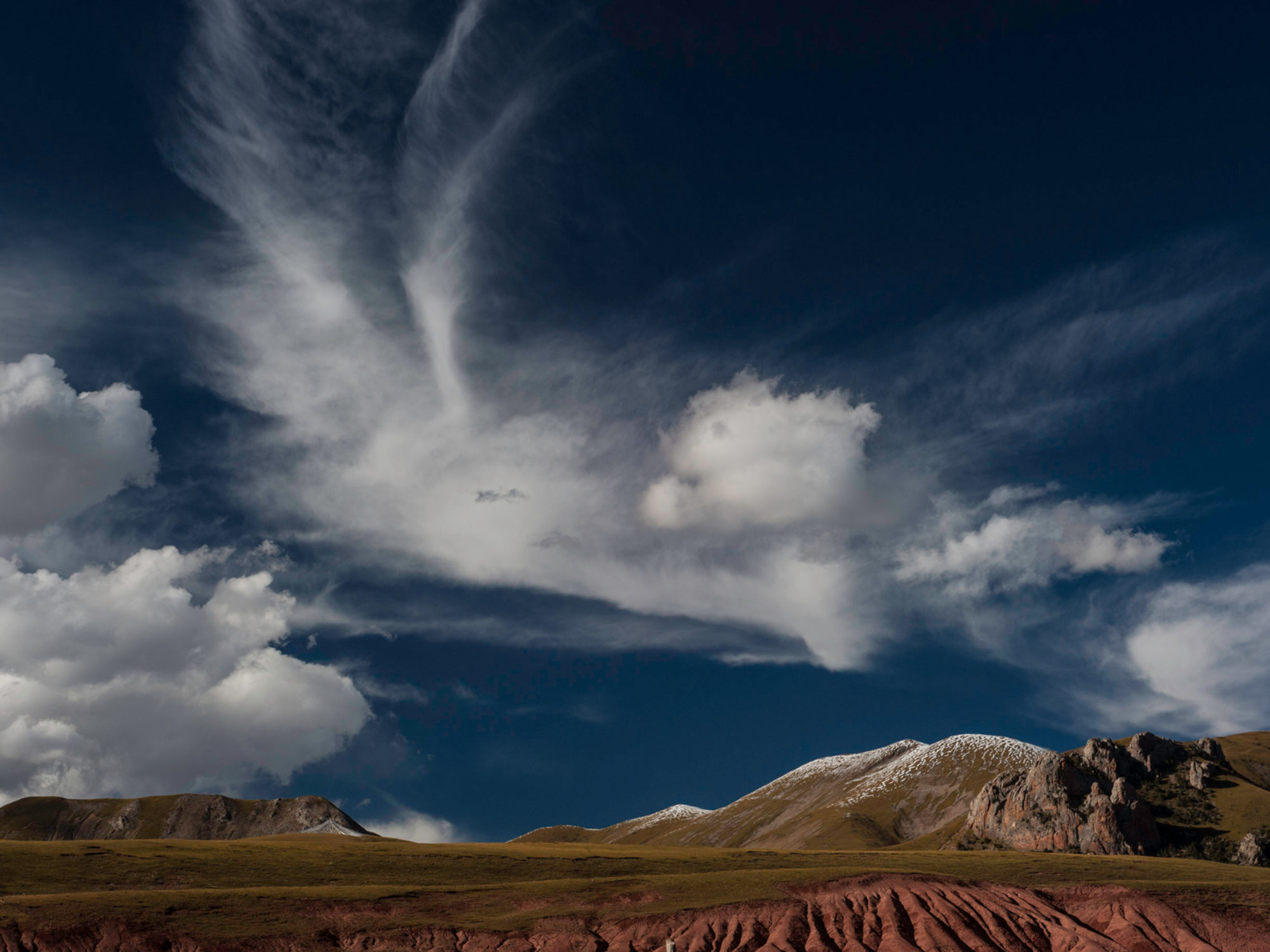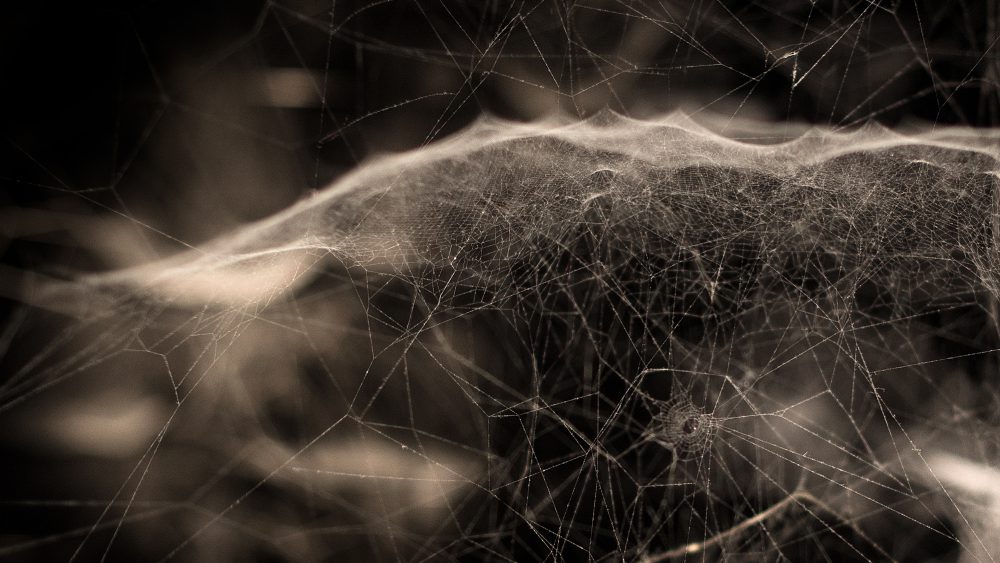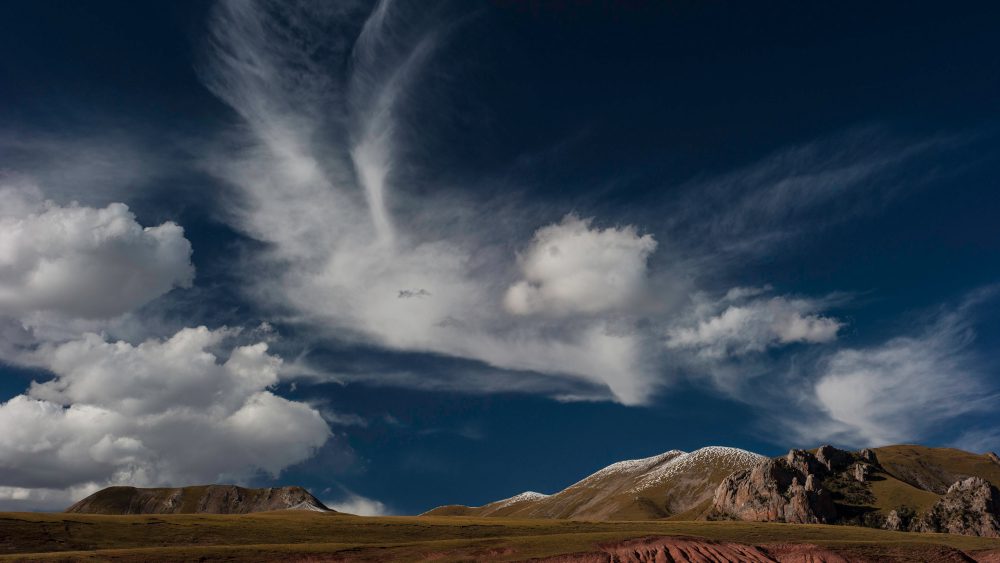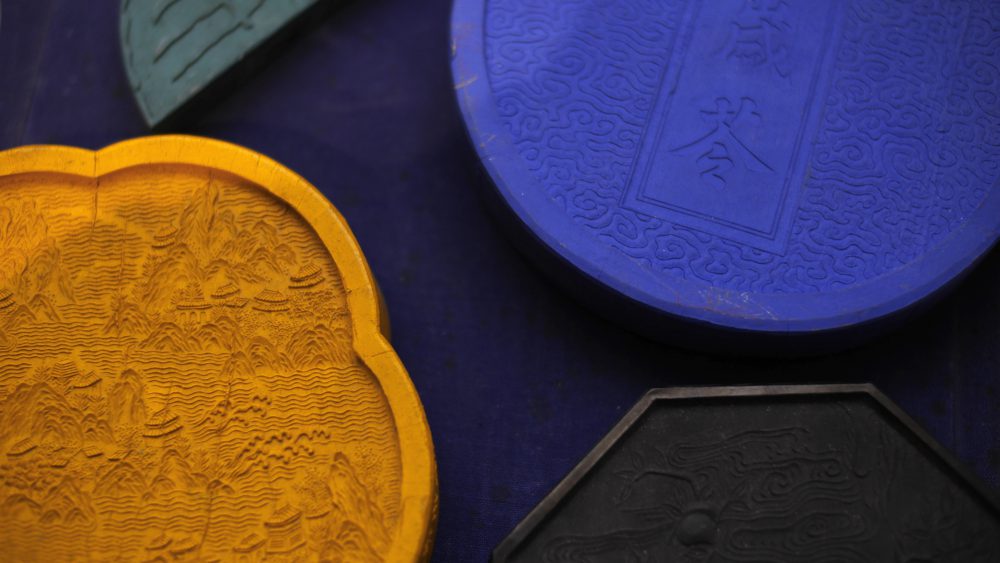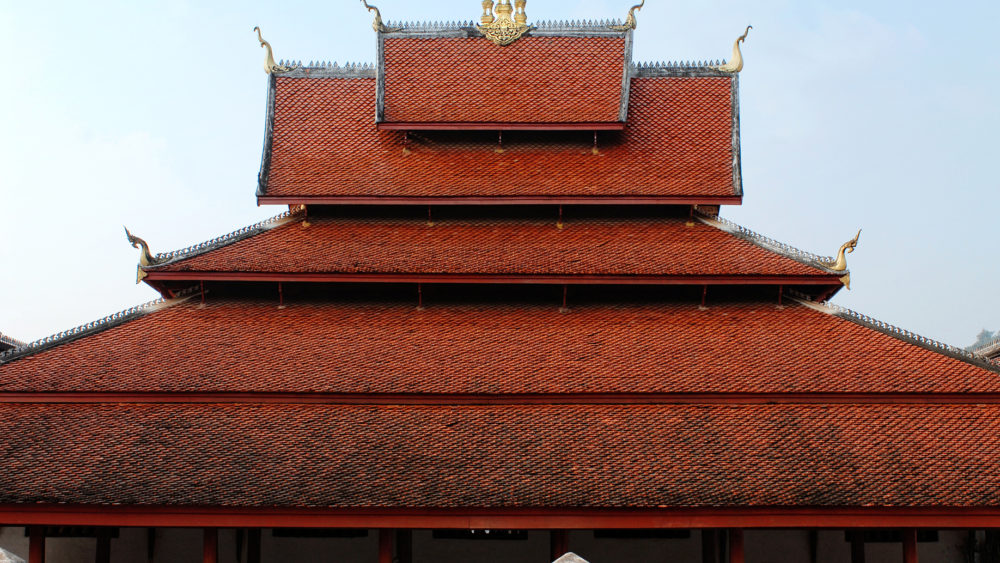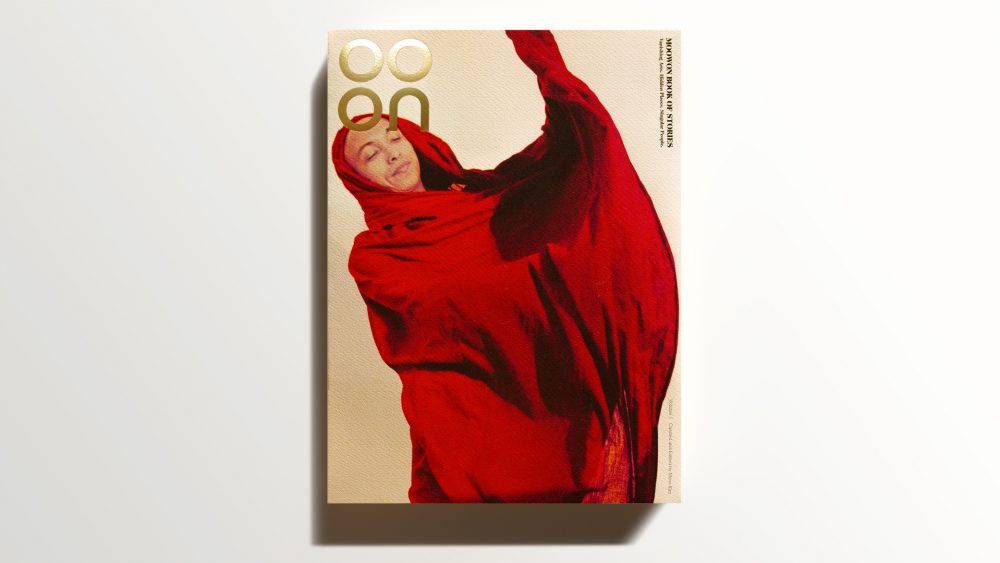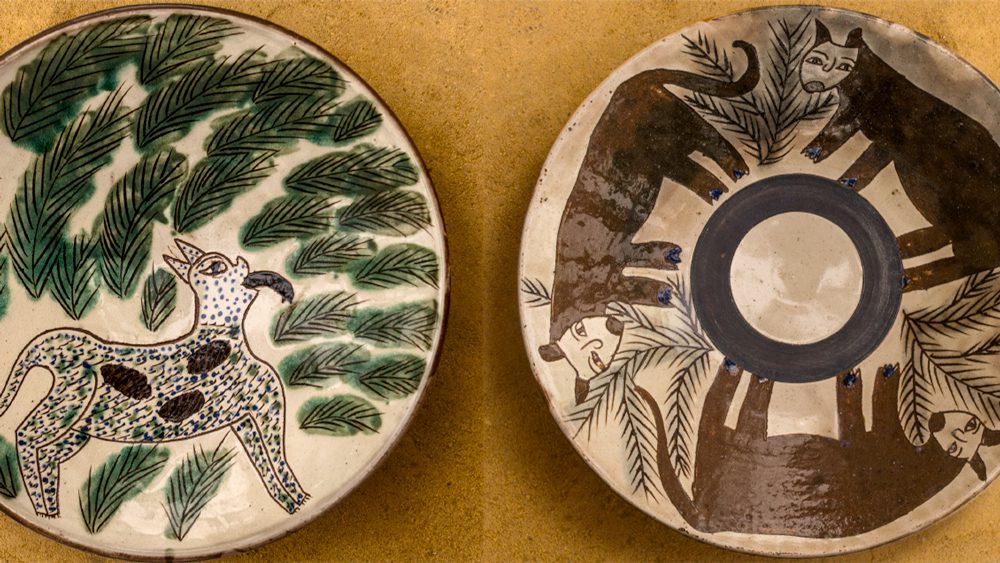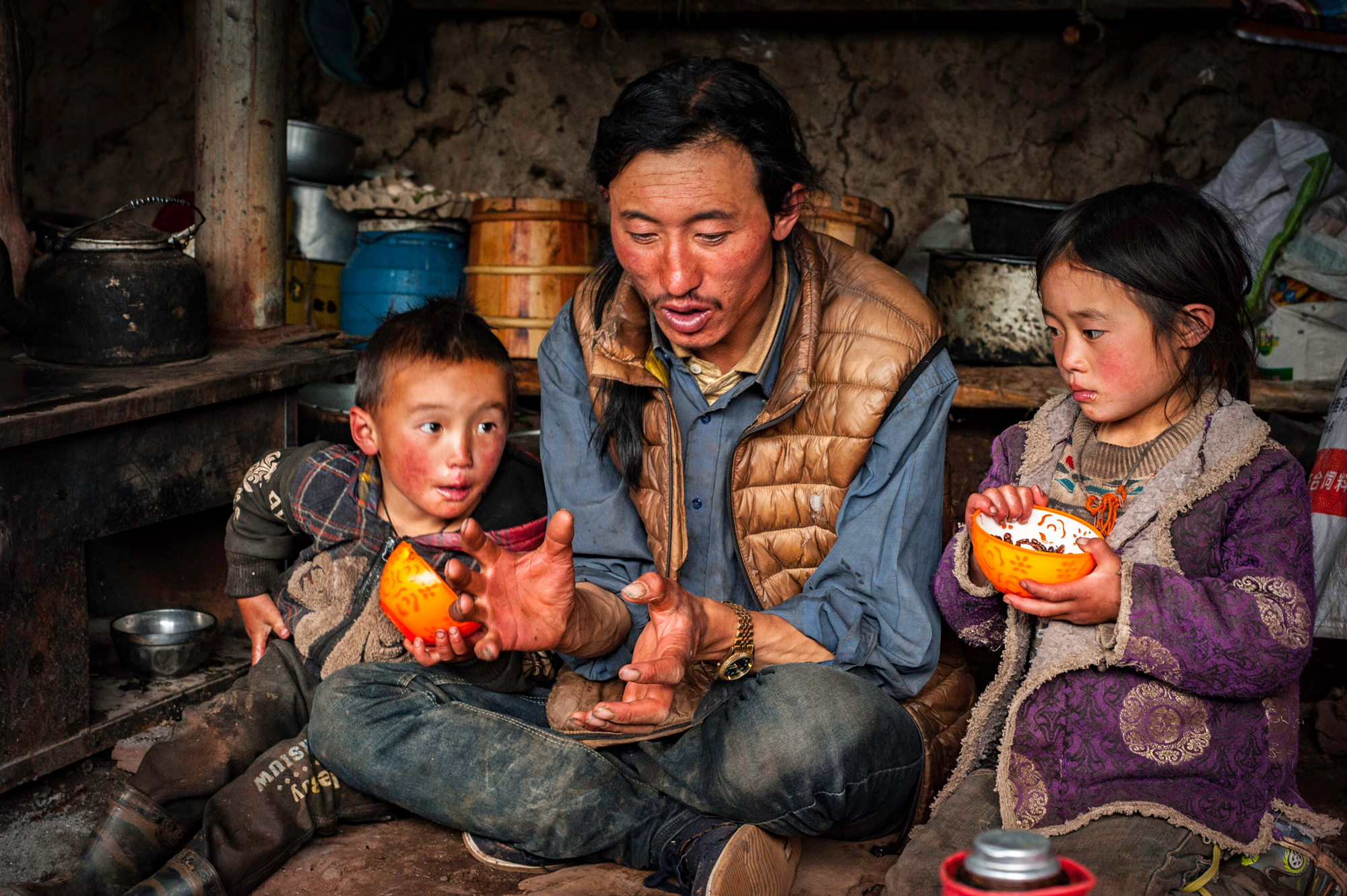
Sonam Wangbo describing how he saw a dragon in the high summer pastures of his nomad camp.
He uses his hands to describe the energy of the dragon pushing a cloud down and then spiraling up into the sky.
Dahu Valley, Kandze area, Kham 2016
"To be really frank about these things, it is something that conventionally you can not explain—
whether it's comprised of the four elements or if it's a form, a substantial body of some kind, or if it's ethereal,
or just a mental body or what. There's something, but it's really impossible to say what.
So nobody can say for sure that dragons aren't real.
Scientists would explain that they are not real because, from the beginning,
they don't accept anything beyond the material, or anything spiritual, so that's that for them.
They just explain it according to the physical elements. But in all these nomadic places, people believe 100%
that these things are real because they've had ages and ages of experience.
Just because science hasn't seen something isn't evidence to refute it.
There's a different reality and a different world in every single person and none of us can refute that."
– Gebchak Wangdrak Rinpoche, in a recent conversation
While I was travelling in eastern Tibet last summer with my Tibetan friend Dawa, I visited Sonam Wangbo and his family, nomads who live in the remote, beautiful and sacred Dahu Valley. We travelled on horseback for many bottom- aching hours to reach his spring home high in flower-filled pastures. When we arrived, we settled in front of his stove with the Tibetan staple, a bowl of tsampa. Local gossip and stories were shared and then, idly, I found myself asking him if he had ever seen a dragon.
"Yes, in the high summer pastures a year or two back," he said casually. Using his hands, he proceeded to describe how a dragon had descended, pushing a thick cloud down towards the mountain, and had then spiralled back up into the sky. He told us that his grandma saw one fleetingly, too, in high summer pastures when she was young. He then moved on to the topic of a new Chinese road coming through the valley below and the impact it might have for him and his family. The dragons were forgotten. I have heard a number of stories of contemporary dragon sightings from Tibetan friends and realise that nomads in high, remote places more frequently make these sightings which are often accompanied by turbulent weather conditions.
The nomads (or drokpa, which roughly translated means people of the solitudes) frequent high lonely alpine grasslands unsuitable for settled farming, moving their herds of yak, sheep and goats up to five times a year according to the seasons. In certain parts of Tibet, nomads also go high into remoter mountains in the spring to collect the highly prized medicinal Cordyceps, otherwise known as Caterpillar Fungus (or Yaertsa Gonbu in Tibetan.) From the stories I've heard, it seems that these solitary places are also the favourite haunts of dragons.
Ani Tenzin Yangchen, a nun at Gebchak Wangdrak Rinpoche's retreat center in Nangchen, told me how she and her nomad family had seen a dragon when they were collecting Cordyceps fungus in a valley near their nomad camp last spring. She told me that they have seen dragons on other occasions, adding: "When a dragon arises, the wind gets choppy and the clouds move around fast and it all gets very violent. You only see dragons in very high altitude places, the tops of mountains. You don't see them in lower altitude places."
Master
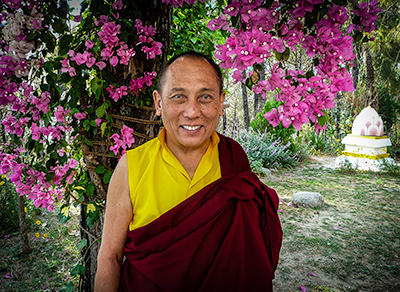
Dru gu Choegyal Rinpoche
I first heard stories of dragons in Tibet from my precious friend, Drugu Choegyal Rinpoche. A noted Tibetan Buddhist Master and artist, I first met him in the Tashi Jong Tibetan community in India in 1994, when I went to interview him about his exquisite watercolour paintings for Cho Yang Magazine.
Choegyal Rinpoche is the eighth reincarnation of the Drugu Choegyal lineage of the Drukpa Kargyu. The Drukpa Kargyu is a line of great masters otherwise known as the "Dragon Yogis." It was established by Tsangpa Gyare who, in search of a site to build his monastery, saw nine dragons (or druk) ascending from the earth into the sky with loud thunderous roars at a place called Nam, near Lhasa. Due to this auspicious sighting, he called the place Namdruk (meaning Sky Dragons) and built his monastery there. He and his group of followers became known as Druk or the Dragon lineage.
In Tibet, Choegyal Rinpoche is a spiritual guide to the people of Tho Drugu, an area located northwest of Chamdo. Tho Drugu is comprised of six nomadic tribal groups and getting from one end to the other end requires a day's journey by horse. As described by Rinpoche, the area "is a pasture where yaks, horses and sheep can graze… the nomads' black yak hair tents can be seen settled over widely scattered areas. It is one of the most beautiful places I have ever seen…there are many white rock mountains, streams and forests."
Over many years, Choegyal Rinpoche has shared with me his stories and insights of the Tibet he remembers, brought to life by his magical and unique watercolour paintings. I have especially loved and been fascinated by his descriptions and depictions of dragons. From our conversations, I have transcribed the stories that follow.
Recounted
by Choegyal Rinpoche
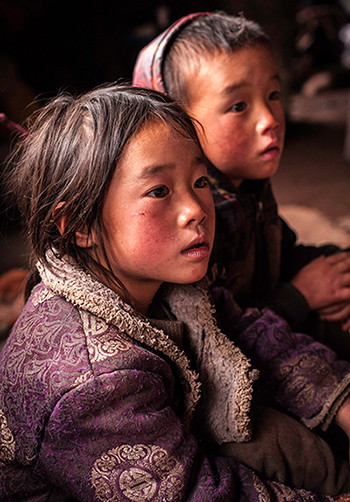
When I was young, living in Tibet, I believed in dragons. Everybody believed in them. I came out of Tibet to India in 1958 or 1959, when I was around eleven or twelve. For many years, I didn't think about dragons as it was a time of study. Then I met many Westerners who became friends; they said that it's not true—dragons don't exist.
They said a dragon was people's imagination, a mythical animal. And so my concepts changed and I thought they don't exist. It wasn't a big thing for me and neither was it a big thing believing in them in Tibet. It became clear that most people didn't believe, so my mind was changed.
Later, when we studied Drukpa Kargyu history, we learned why it is called Drukpa, named after the dragons that the founder Tsangpa Gyare saw.
Somehow, I came to suspect that there was something more to certain events in Tibet to do with dragons. This conviction began to grow when a number of respectable people told me stories about what had happened when their spiritual teacher, Dorzong Rinpoche (who was earlier my Dharma-brother but who I now regard as a teacher and inspiration,) visited a holy place in Tibet in his childhood. Because the whole village had seen the special signs at the birth of this child, they had great respect for him. And they used to talk about how nine dragons were perceived when the young Dorzong Rinpoche visited Yonten Ritroe in Rongmi.
Still, to me, it seemed like people's imaginary fantasy. And yet the stories were very honest, but I couldn't help thinking that it must have been very special clouds, even though the descriptions seemed very convincing.
I came across more and more reliable people—the sort who don't just accept mysterious things, who are very down to earth and not the type to fall for fantasies. They told me they had really seen dragons in Tibet and gave very precise descriptions of the place, time, distance involved, size, colour and shape. So I have come to believe that dragons existed in Tibet before.
Ascending into the
Sky
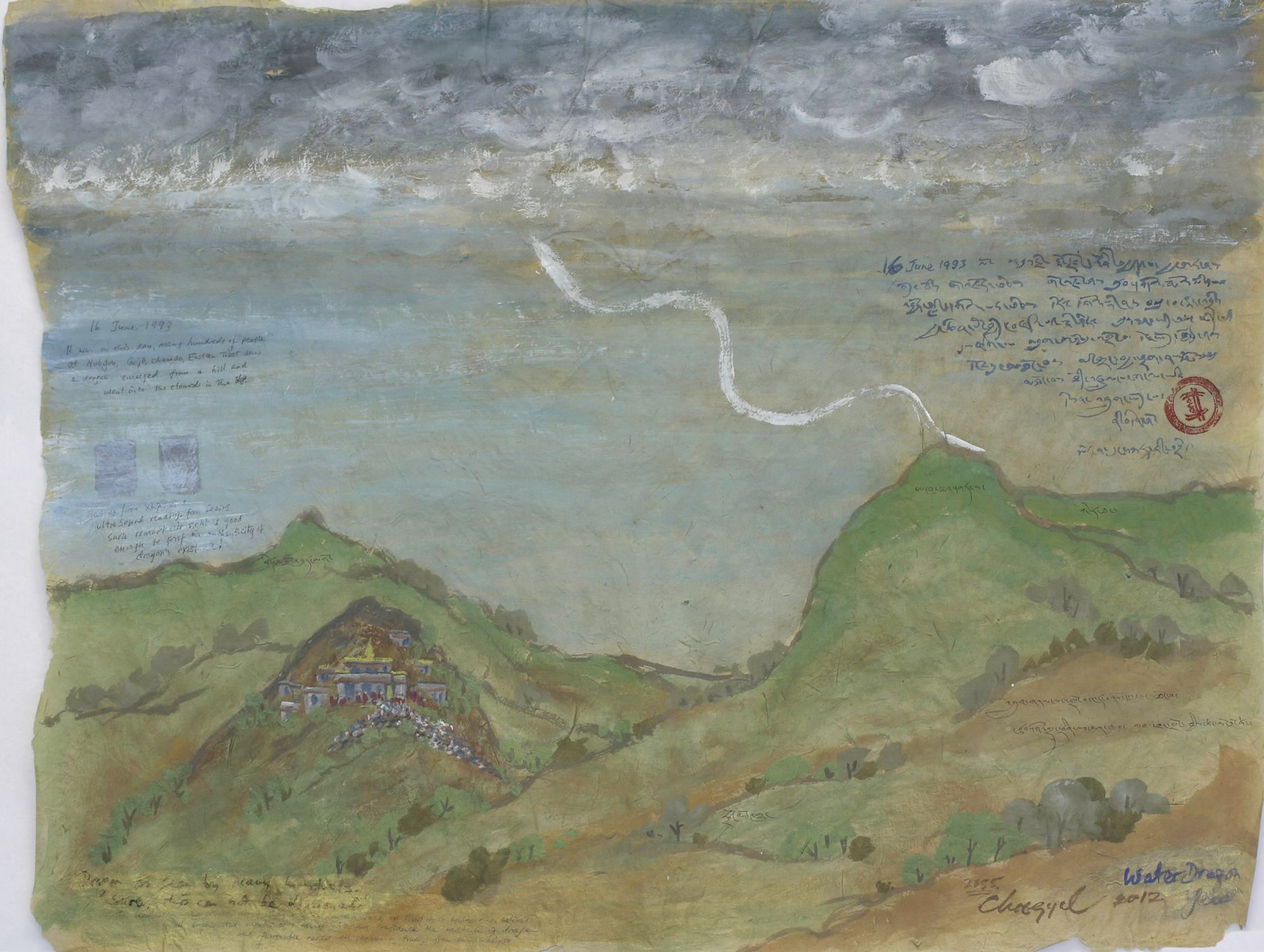
Dru gu Choegyal Rinpoche's painting of the dragon seen ascending into the sky from the hill in front of Nubgon Monastery in Gonjo, Kham, by thousands of people in June 1993. Painted in 2012.
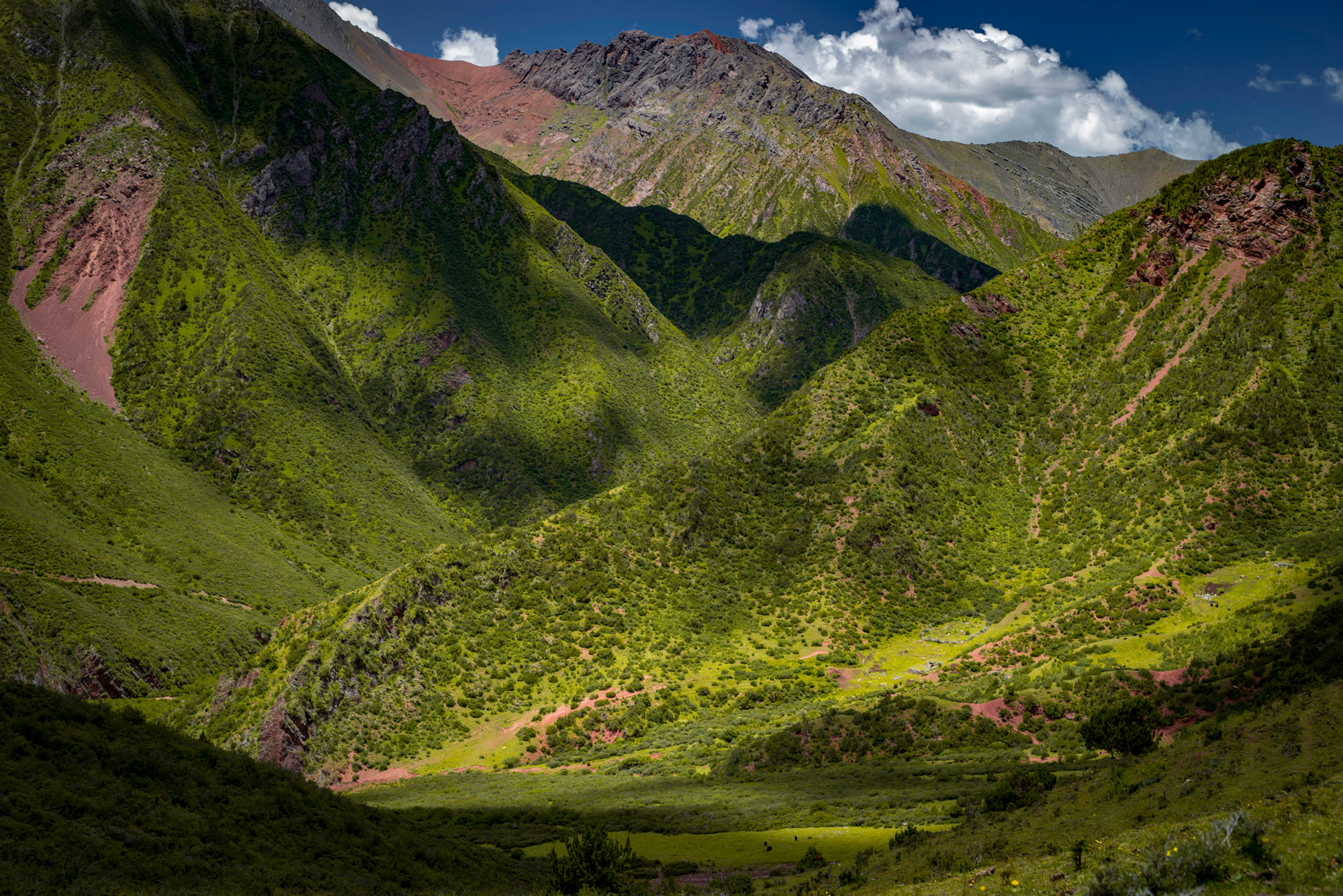
A very well-known occasion that took place in the presence of thousands of people was the famous dragon ascending into the sky from the hill in front of Nubgon Monastery in Gonjo, Kham. This was when the eighth Dorzong Rinpoche visited the monastery to perform the enthronement of Popa Rinpoche and to bless the reconstructed shrine, which had been destroyed in the Cultural Revolution.
The ceremony was held inside the temple on 16th of June 1993, but the majority of people could not fit inside and were waiting outside and praying. Suddenly, everyone saw a dragon emerge from the top of the hill and shoot into a cloud! As is traditional in Tibet, and especially among the Gonjo people, at a joyful moment they all shout 'Kyi, Lha-Gyal-Lo, Kyi, Lha-Gyal-Lo,' an ancient call which means 'Be happy, may the gods be victorious.'
When the shouting outside reached the people inside the temple, they thought that the people were drunkenly happy and shouting with joy. This is what they told Dorzong Rinpoche. Then people from outside ran in and told of the dragon ascending into the sky from the hill in front of the monastery.
Tibetans believe that when you see a dragon ascending into the sky any wish you make will be fulfilled, so they usually pray for the peace and happiness of all beings in every world by shouting 'Sem-chen tam-che-la ga-mo chid-mo yongoe.'
Konchok Tashi, Dorzong Rinpoche's personal photographer, was called outside to see the strange event and he saw the dragon flying from mountain top to mountain top, waving its tail. He ran straight away to get his camera from the Lama's room in the upper residence and returned to take pictures. By then most of the dragon's body had passed into the rain clouds, but the last part of it was still bending and rolling up and down.
So many people really saw it—thousands of people all together—so it was not an illusion. It was a real event. So after that, I became fully convinced that there are dragons, and then I asked many of the senior people in Tashi Jong: "Have you seen dragons?" I wanted to investigate who had seen them.
Snake with
Horns
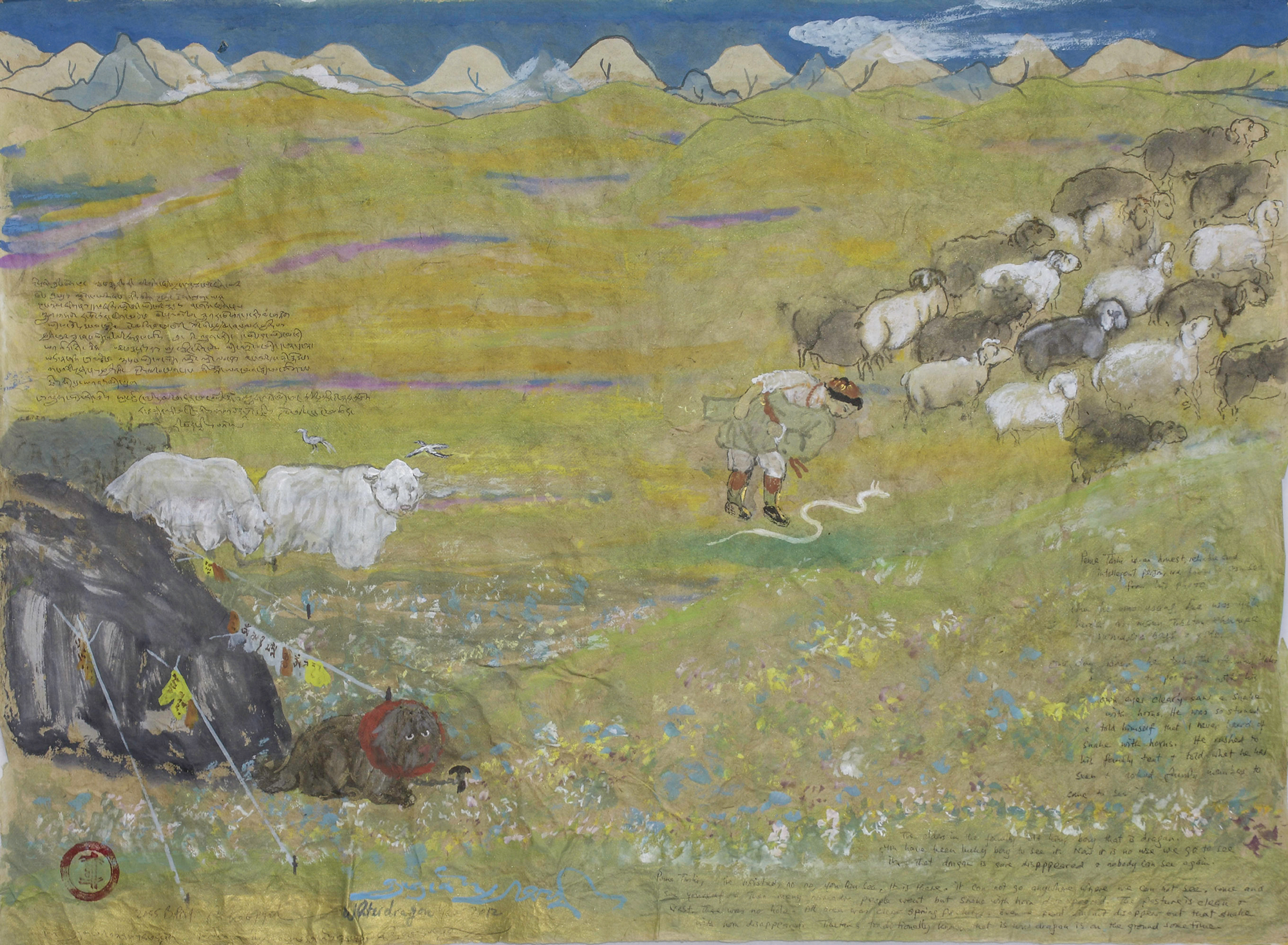
Dru gu Choegyal Rinpoche's painting of Pema Tashi's story of seeing a snake with horns (baby dragon) when he was young in Tibet 2012
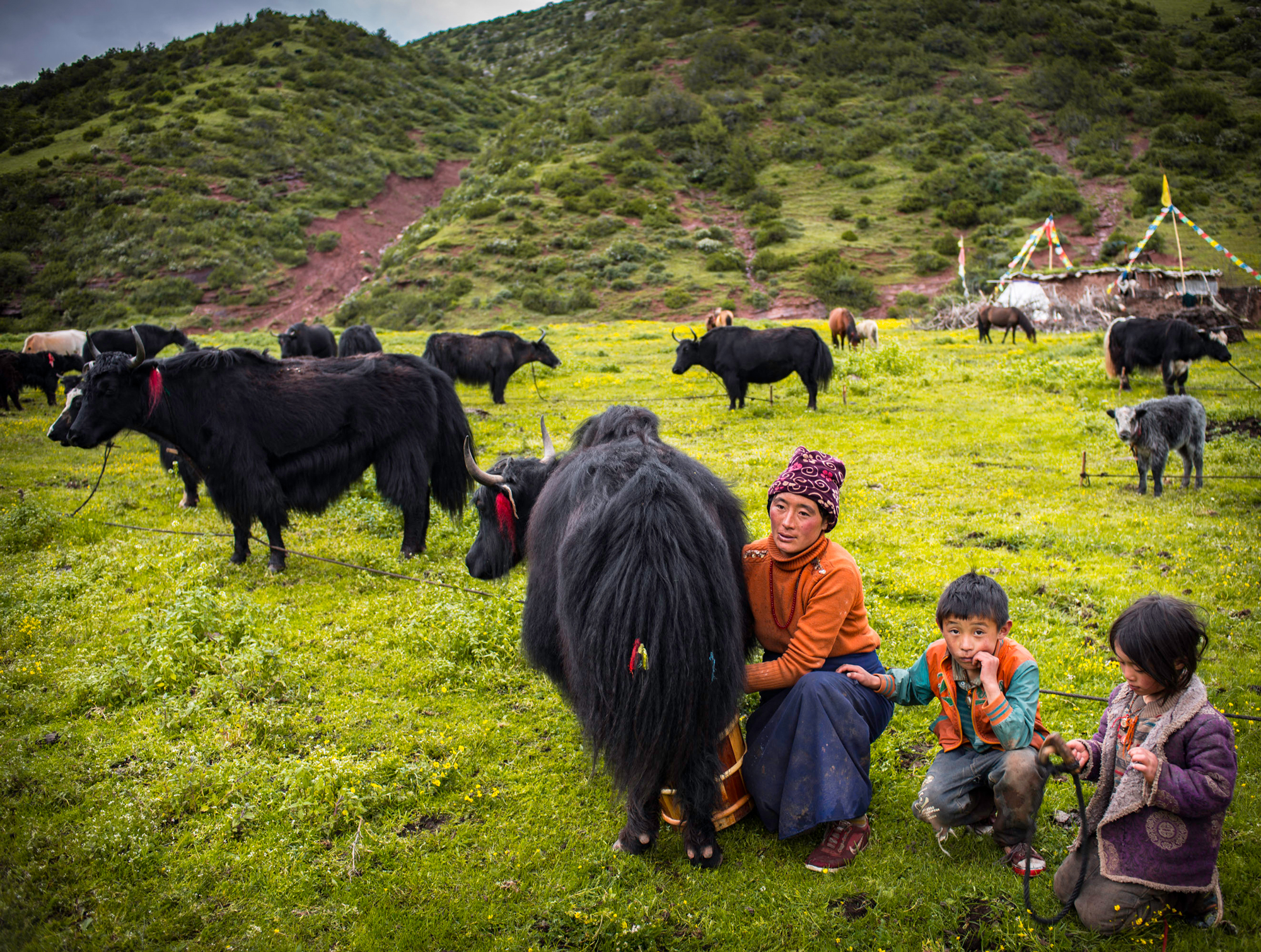
Among senior Tibetans, I met a few very reliable people who have seen dragons. One was Pema Tashi, an older man, very well respected, very honest and very intelligent. He was one of the very hardworking and dedicated people who worked for Tashi Jong, a very important member of the community in those days. He said he had seen a dragon. When he was young in Tibet, his family were nomads in the area of Ling (around Dege). One morning, when he was taking the yaks to graze on the pasture, he very clearly saw a snake with horns. He was very surprised. It stayed in one place and he looked very carefully, and yes, it has horns!
He was really astonished and he left the yaks there. He was very small and he ran back to his family in their black tent, screaming to everyone: "There's a snake with horns! Come, come and see!" Older family members said: "No, no, no! That's a dragon. There's no point in going there to see. If we go there it won't be there, it will have disappeared!" He said: "No, no, it definitely will not disappear. Come, come, I'll show you. It is very short, very clear grass—no bushes, no where for it to disappear." So they all went and when they got there, it had totally disappeared.
Sucking Up Water
from a Stream
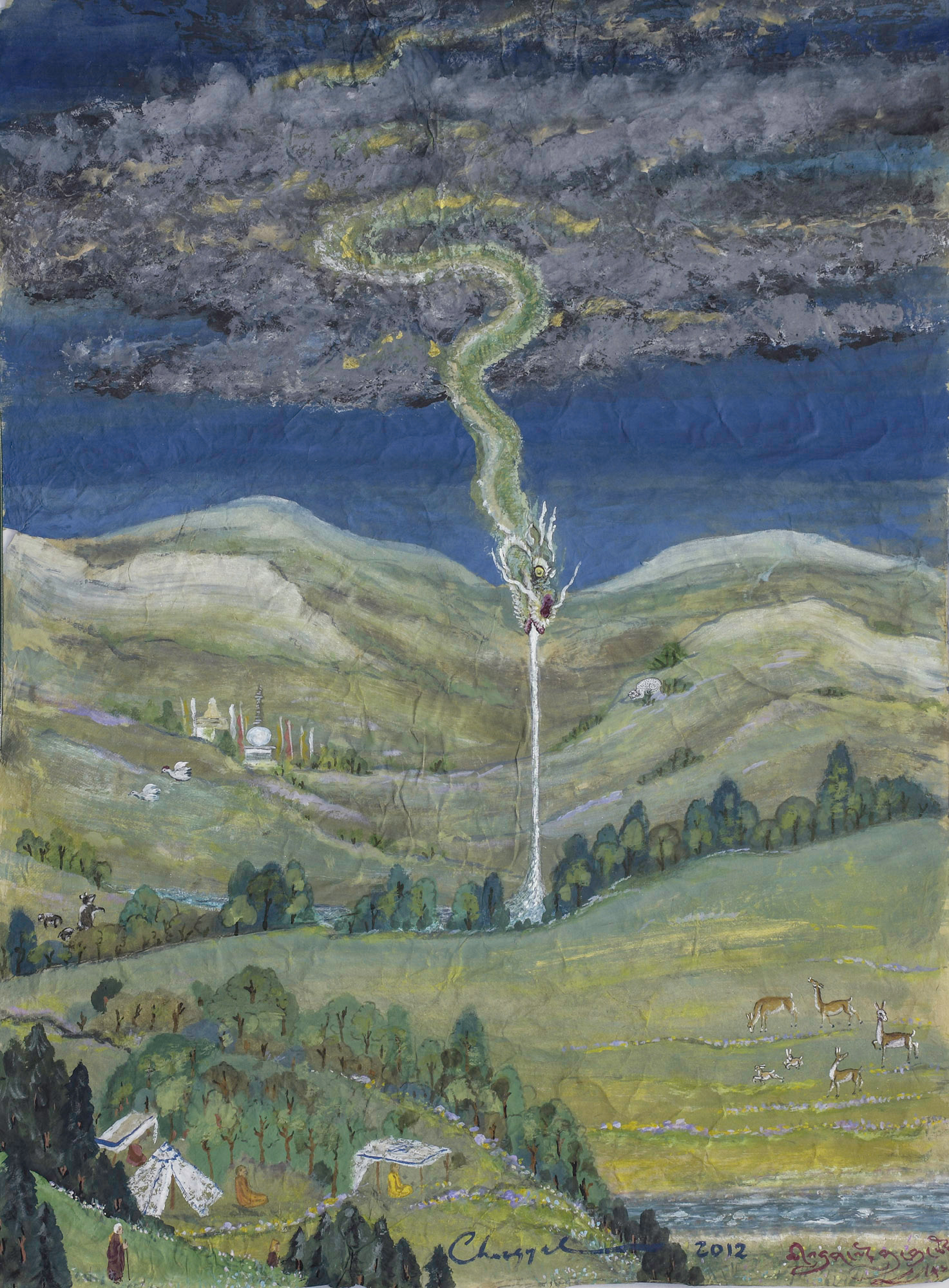
Dru gu Choegyal Rinpoche's painting of a dragon sucking up water from a stream in Tibet, 2012.
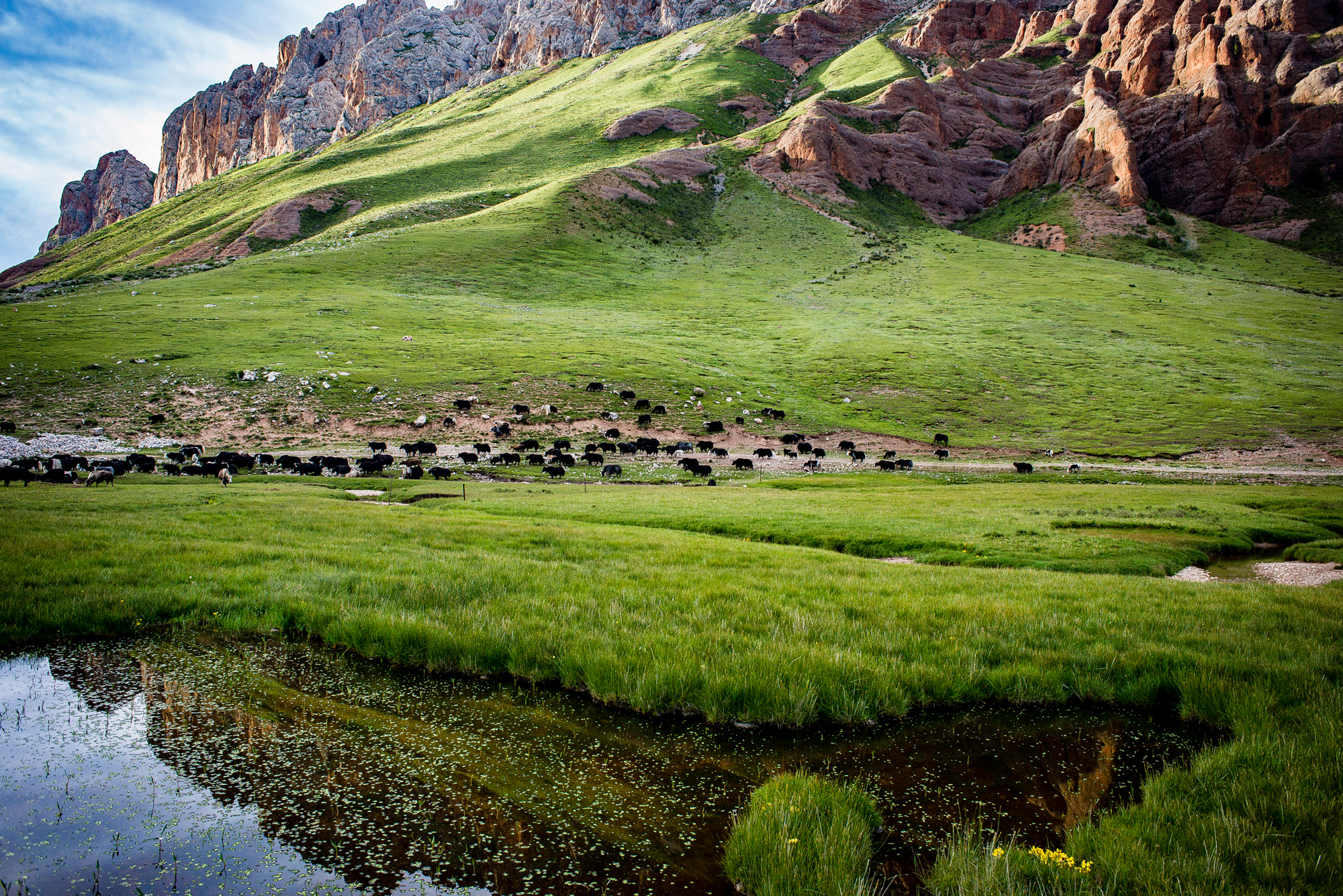
This story was told to me by H.E. Adeu Rinpoche who heard it from a very high Gelugpa Rinpoche from Amdo. The Amdo Rinpoche and his monks went for a picnic with their families. Tents were put up, wood collected, and water was brought to the stone-piled fireplace. Some of the group started to make a fire and to boil water for tea. Some had no tasks so went into a wood to have some moments of practising love and compassion, prayer and meditation.
They heard a loud sound, like a tornado. In fact, they thought it was a tornado and they all tried to run to the trees and hold on to them. But it wasn't that, and they were fine. The high sound made the wild animals that were freely wandering in the area run around in shock. But there was no harm to anyone. Then they clearly saw a dragon stretching down towards a spring and sucking up a jet of water into its mouth. Within a flash, the dragon went back up into the clouds with a happy, contented roaring.
Who Falls into the
Dragon’s Den
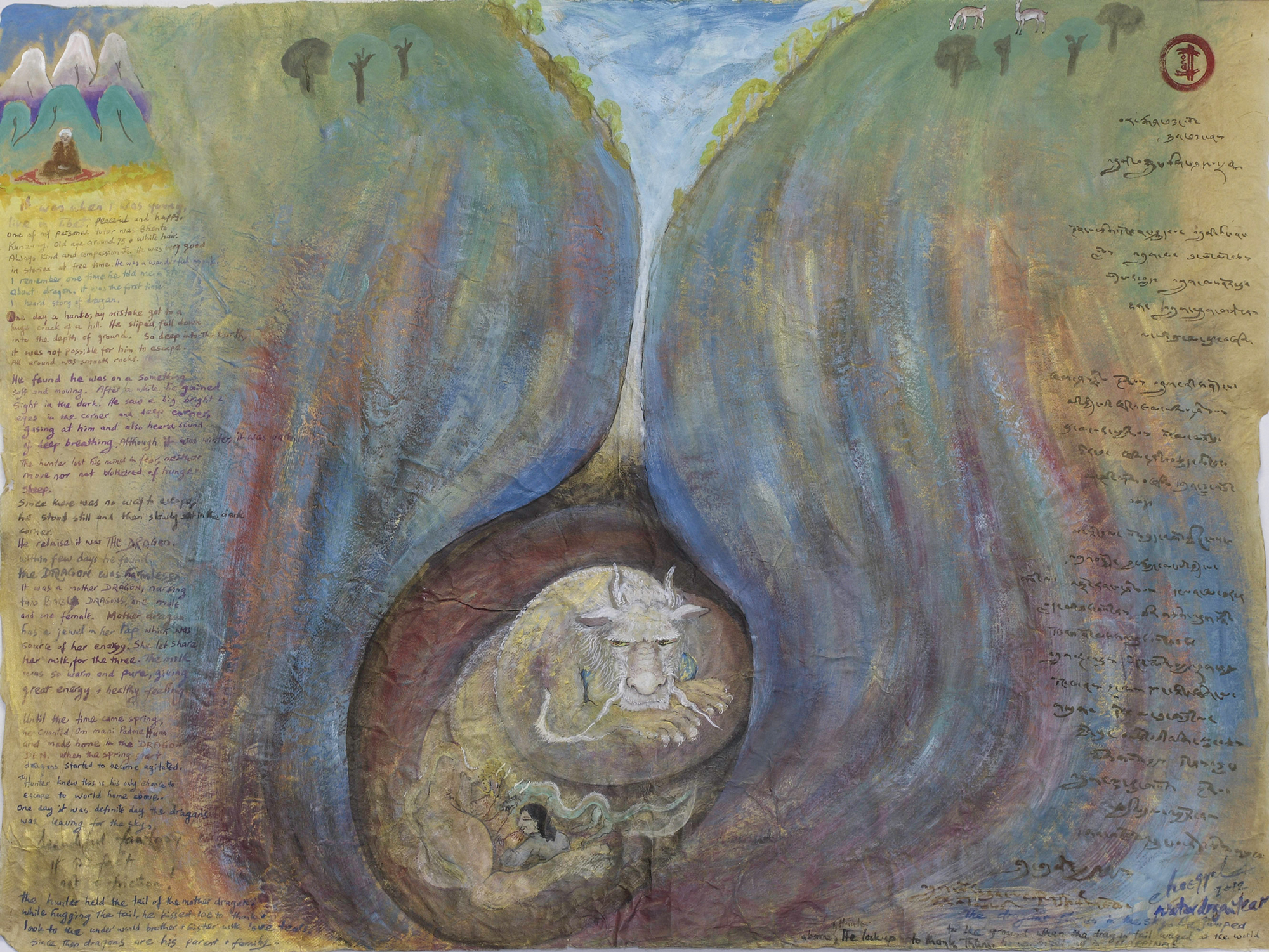
Dru gu Choegyal Rinpoche's painting of a hunter who falls into a dragon's den ––a story told to him by one of his tutors when he was young. Painted in 2012.
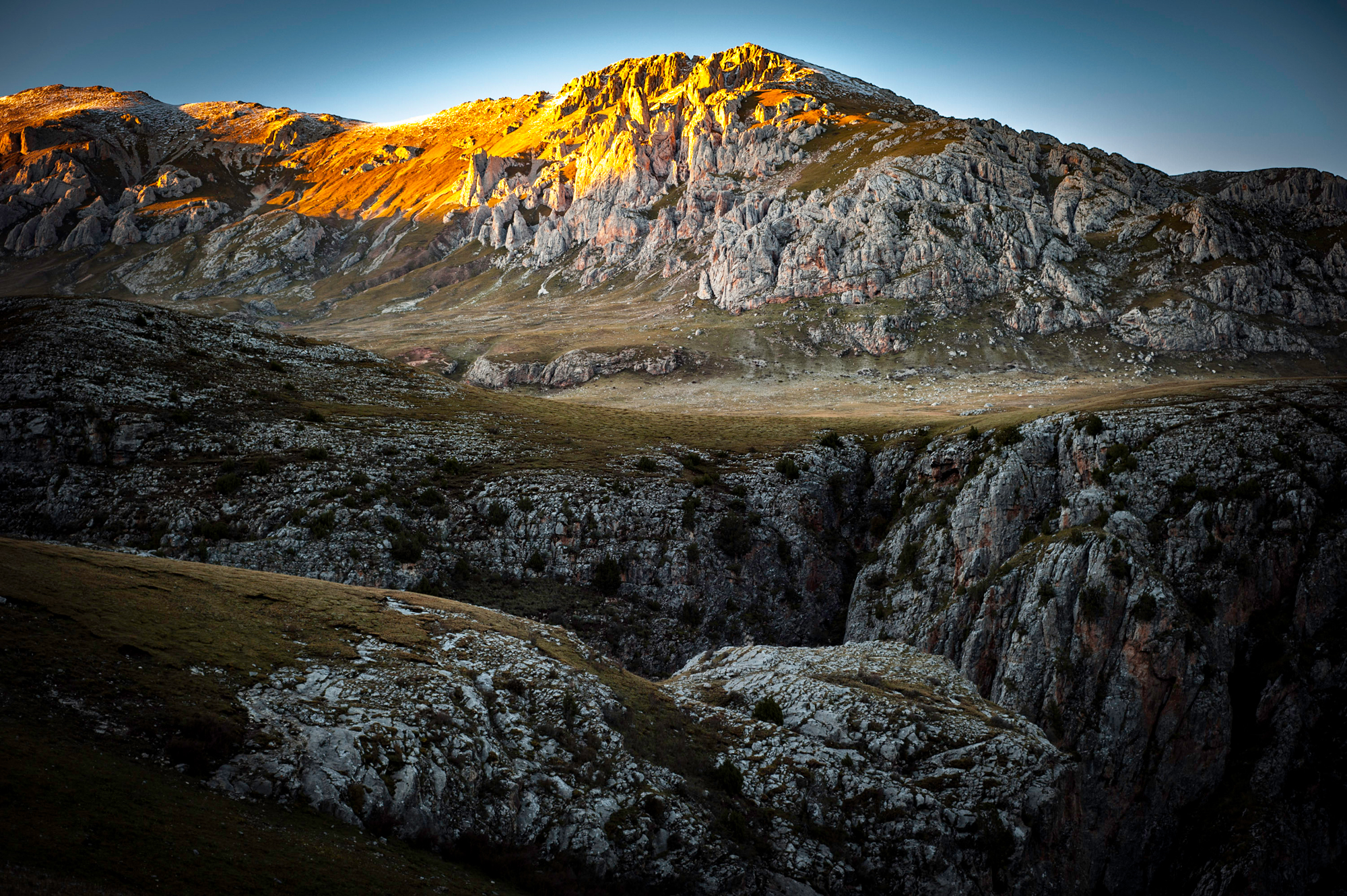
It was when I was young, living in Tibet, peaceful and happy. One of my personal tutors was Bhente Kunzang. He was old, around 75 and with white hair, always kind and compassionate. He was very good at telling stories when we had free time. He was a wonderful monk.
I remember one time he told me a story about a dragon. One day a hunter, by mistake, reached a huge crevasse in a hill. He slipped and fell down deep into the ground, so deep into the earth that it was not possible for him to escape. All around were smooth rocks.
He found that he was lying on something soft and moving. After a while, he regained his sight in the dark. He saw two big bright eyes in the corner gazing at him and heard the sound of deep breathing. Although it was winter, it was warm. The hunter lost his mind in fear, neither moving nor bothered by hunger or the need to sleep. Since there was no way to escape, he stood still and then slowly sat in a dark corner. He realised that here was a dragon.
Within a few days, he found that the dragon was harmless. It was a mother dragon nursing two baby dragons, one male and one female. The mother dragon had a jewel in her lap, which was the source of her energy. She shared her milk with the babies and the hunter. The milk was warm and pure, giving great energy and a healthy feeling.
Until springtime came, the hunter chanted 'Om mani padme hum' * and made his home in the dragon's den. When spring came, the dragon started to become agitated. The hunter knew that this was his only chance to escape to his home and the world above. One day, it was clear that the dragon was leaving for the sky. The hunter held the tail of the mother dragon. While hugging the tail, he kissed it 108* times in thanks and looked to his underworld brother and sister with love and tears. Since then, dragons are his parent and family.
Is
Truth
Listening to Tibetans recounting sightings of dragons in Tibet is extraordinary. To see a dragon in our world would be unbelievable but in a culture where dragons are real, it is special—it is a great blessing to see one and a fact of life in the remote mountain areas of Tibet.
"Many dragons were truly seen. They are true. Otherwise why would so many good people tell useless stories? What benefit is there to tell something that is not true? In earlier times, Tibetans knew who told the truth and whose words were not reliable. The population was small and generations of people in an area knew each other very well. Dragons are real. I have no wish to prove the existence of dragons. For what reason would I try to prove this? Truth is Truth." – Choegyal Rinpoche
* Om mani padme hum is the most commonly used mantra among Tibetan Buddhists
* 108 is a sacred number in Tibet and India.

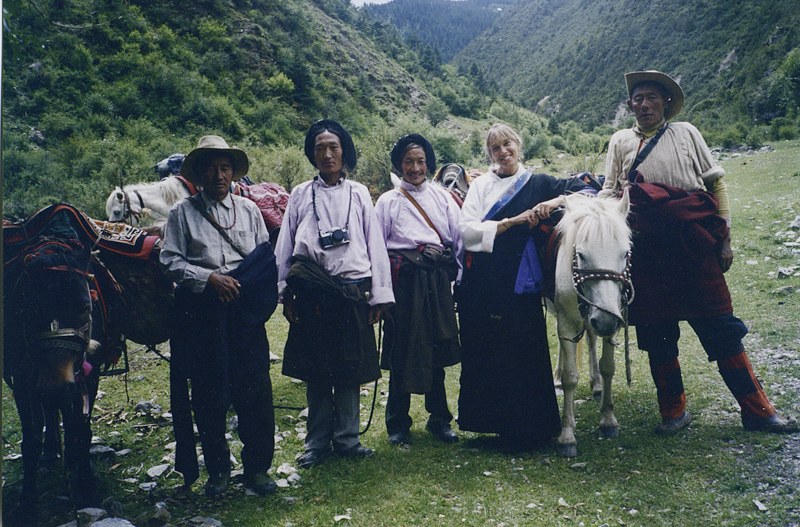
Diane Barker is a photographer and artist based in Worcestershire, England. Born in what was historically a pub, Diane's "nomadic" roots trace back to the 70s as a hippie living in a camper van in America. It was also during that time her first encounter with the Tibetan lamas transpired in Wales. During the 1990s, a Buddhist boyfriend lured her into a voyage to India, which eventually led to her encounter with Tibetan nomads in the Changthang of Ladakh. Ever since, Tibetan nomads are her obsession and the subject of her heart.
Venerable Drugu Choegyal Rinpoche is the 8th incarnation in the line of Choegyal Rinpoches, all of whom were outstanding artists and masters of the Drukpa Kagyu meditation lineage. Originally from Tibet, Choegyal Rinpoche has been active in the arts preservation and training programs in the Tashi Jong community in India. He also founded the Tibetan Heritage Project on the outskirts of Kathmandu, Nepal. Well aware of the potentially negative stresses and influences challenging Tibetan refugee artists today, Rinpoche encourages the exuberant diversity of expressive forms; at the same time he emphasizes the singular purity of motivation that must distinguish all dharma activity. His own work is remarkable, both for its radiant clarity and for its range of style—from the ornate precision of traditional religious thankas to tender depictions of Tibetan scenes and impressionistic expressions of his spiritual experiences. His work has been exhibited across Europe, North and South Americas, and Asia. His paintings, carpets, and carpet designs are included in museums and prominent private collections. See www.artsofunderstanding.org to view more of his art.
EDITING: COPYRIGHT © MOOWON MAGAZINE / MONA KIM PROJECTS LLC. ALL RIGHTS RESERVED.
PHOTOS & TEXT: COPYRIGHT © DIANE BARKER. ALL RIGHTS RESERVED.
PAINTINGS COURTESY OF CHOEGYAL RINPOCHE. ALL RIGHTS RESERVED.
